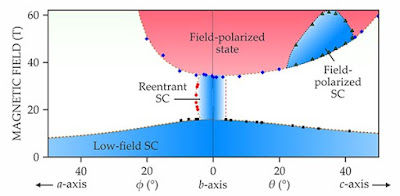An RNA-making molecule crystallizes on magnetite, which can bias the process toward a single chiral form. S. FURKAN OZTURK
Topics: Biology, Biotechnology, Chemistry, Magnetism, Materials Science
In 1848, French chemist Louis Pasteur discovered that some molecules essential for life exist in mirror-image forms, much like our left and right hands. Today, we know biology chooses just one of these “chiral” forms: DNA, RNA, and their building blocks are all right-handed, whereas amino acids and proteins are all left-handed. Pasteur, who saw hints of this selectivity, or “homochirality,” thought magnetic fields might somehow explain it, but its origin has remained one of biology’s great mysteries. Now, it turns out Pasteur may have been onto something.
In three new papers, researchers suggest magnetic minerals common on early Earth could have caused key biomolecules to accumulate on their surface in just one mirror image form, setting off positive feedback that continued to favor the same form. “It’s a real breakthrough,” says Jack Szostak, an origin of life chemist at the University of Chicago who was not involved with the new work. “Homochirality is essential to get biology started, and this is [a possible]—and I would say very likely—solution.”
Chemical reactions are typically unbiased, yielding equal amounts of right- and left-handed molecules. But life requires selectivity: Only right-handed DNA, for example, has the correct twist to interact properly with other chiral molecules. To get [life], “you’ve got to break the mirror, or you can’t pull it off,” says Gerald Joyce, an origin of life chemist and president of the Salk Institute for Biological Studies.
Over the past century, researchers have proposed various mechanisms for skewing the first biomolecules, including cosmic rays and polarized light. Both can cause an initial bias favoring either right- or left-handed molecules, but they don’t directly explain how this initial bias was amplified to create the large reservoirs of chiral molecules likely needed to make the first cells. An explanation that creates an initial bias is a good start but “not sufficient,” says Dimitar Sasselov, a physicist at Harvard University and a leader of the new work.
‘Breakthrough’ could explain why life molecules are left- or right-handed, Robert F. Service, Science.org.

